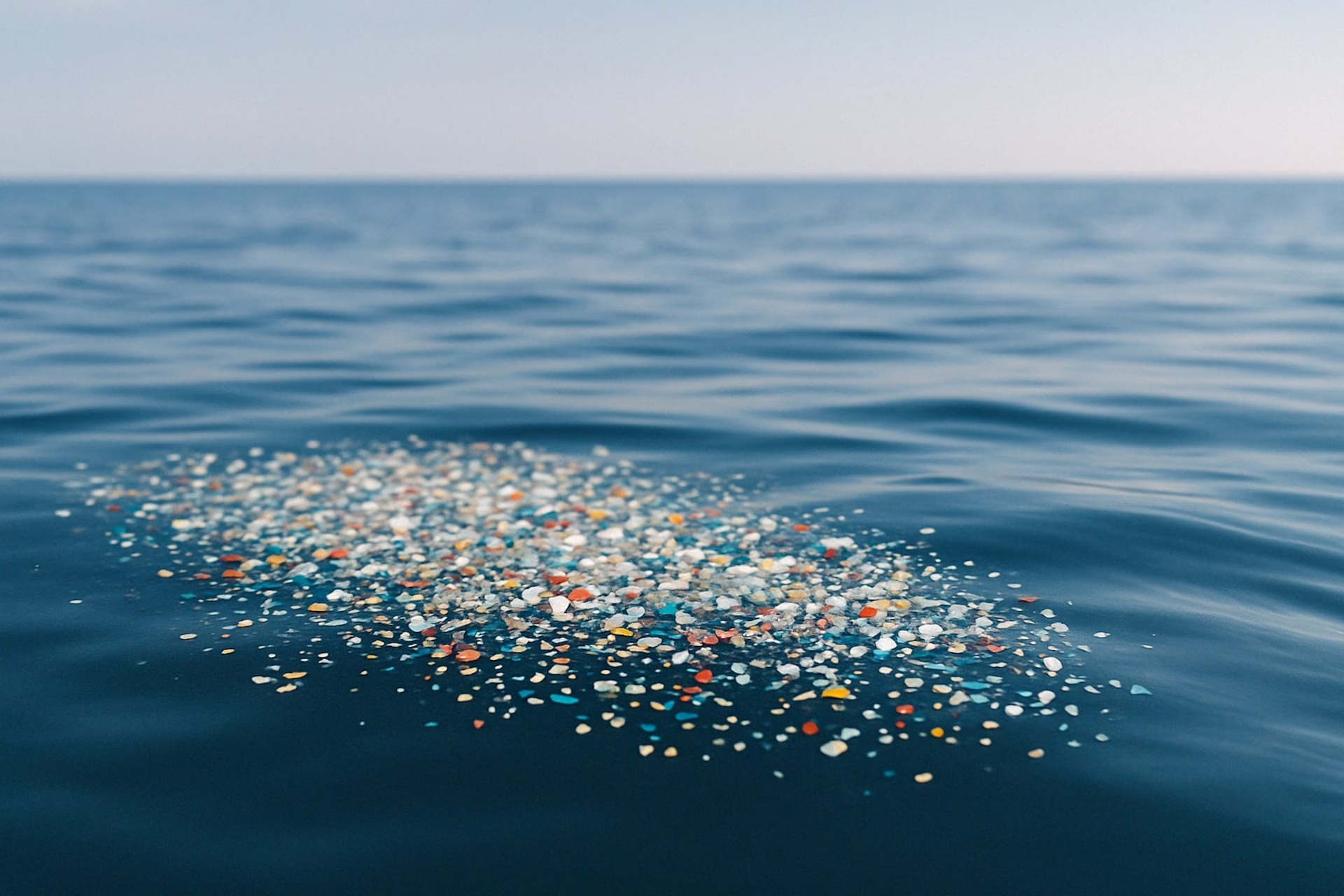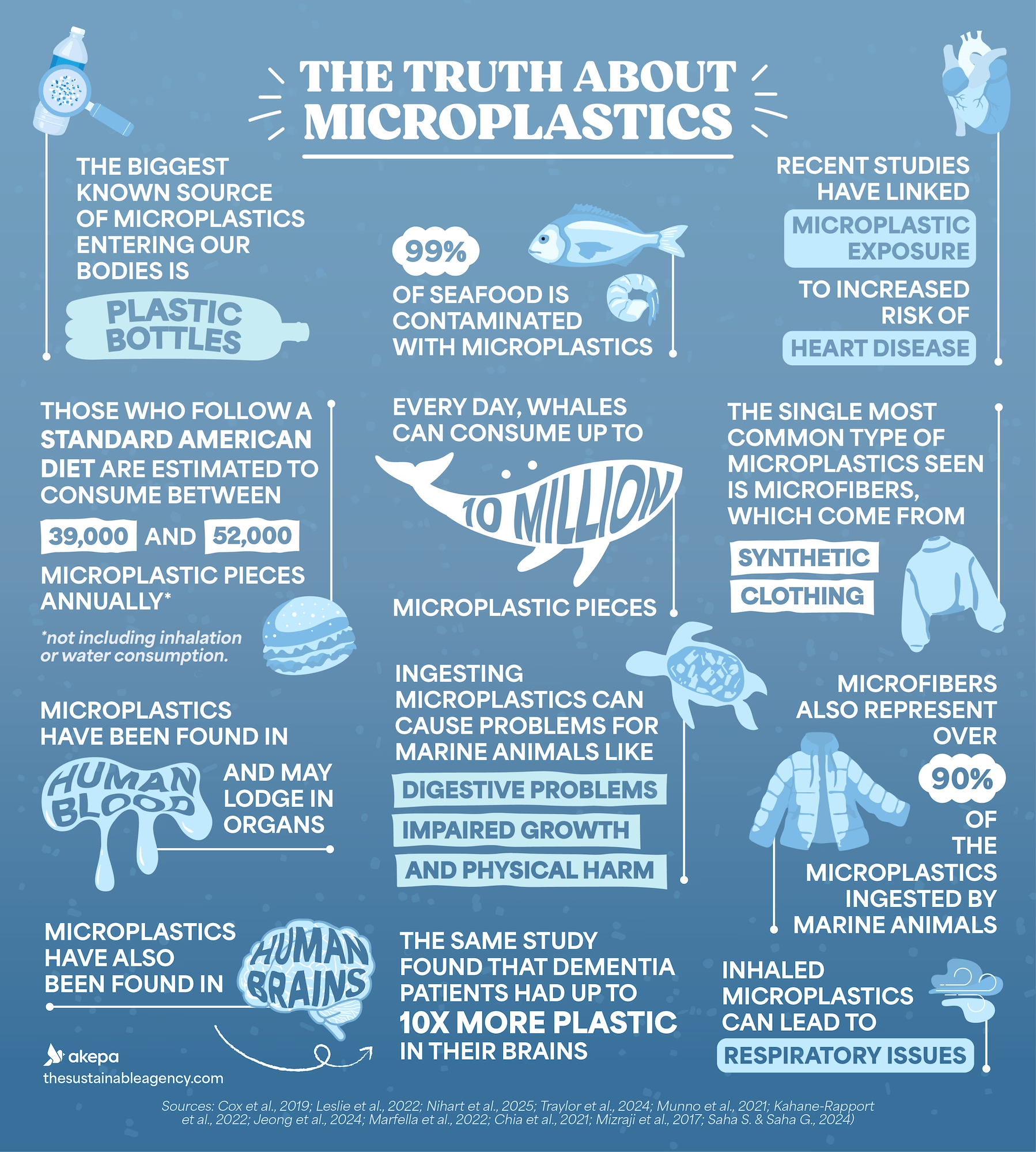Microplastics may be miniature, but they’re a real menace to planet Earth.
The evidence against these tiny little miscreants is mounting. Microplastics are classified as those plastics that are less than 5mm long. But don’t be deceived by their small size and think they’re not nasty. Because they are nasty.
Where do they come from? Well, they can come from a variety of sources, but often they’re the progeny of larger chunks of plastic. They’re causing all sorts of damage and proportionally even more than the bigger chunks.
Without further ado, let’s take out the microscope and look at what’s going on. We’ll be keeping this list updated as new evidence comes to light. We’ve also crammed some of the key stats into an infographic, which you can see below. Feel free to share it to spread awareness!
- The biggest known source of microplastics that enters our bodies is bottled water. (Cox. et al., 2019)
- Those who follow a standard American diet are estimated to consume between 39,000 and 52,000 microplastic pieces annually (not including inhalation or water consumption). (Cox. et al., 2019)
- When taking air inhalation and bottled water consumption into account, those who follow a standard American diet are estimated to consume between 74,000 and 211,000 microplastic pieces annually. (Cox. et al., 2019)
- Microplastics have been found in human blood and may lodge in organs. (Leslie et al., 2022)
- Microplastics have also been found in human brains – and in higher amounts than in other organs. (Nihart et al., 2025)
- The same study found that dementia patients had up to 10x more plastic in their brains. But while there’s a clear correlation, the study cannot show whether higher levels of microplastics in the brain actually cause dementia symptoms. (Nihart et al., 2025)
- 99% of seafood is contaminated with microplastics. (Traylor et al., 2024; Munno et al., 2021)
- Every day, whales can consume up to 10 million microplastic particles. (Kahane-Rapport et al., 2022)
- Ingesting microplastics can cause problems for marine animals, like digestive problems, impaired growth, and physical harm. (Jeong et al., 2024; Hollerova et al., 2021)
- Recent studies have linked microplastic exposure to an increased risk of heart disease. (Marfella et al., 2022)
- The single most common type of microplastics seen is microfibers, which come from synthetic clothing. (Chia et al., 2021)
- Microfibres also represent over 90% of the microplastics ingested by marine animals. (Mizraji et al., 2017) / Most microplastics that marine animals ingest are microfibres from synthetic clothing. (Traylor et al., 2024)
- Humans are mostly exposed to microplastics through inhalation. (Zhang et al., 2020)
- Inhaled microplastics can lead to respiratory issues. (Saha, S. & Saha, G., 2024)
These are all pretty convincing stats, but still, you – like us – might wonder what on Earth we can do when microplastics are so difficult to control and running riot at a microscopic level. We can’t exactly shrink ourselves down and start cleaning things up, can we, at least not yet.
We don’t have all the answers, but some clever pioneers are doing their best to deal with the problem. Just last year, scientists in China created a cotton and squid bone sponge that could soak up 99% of microplastics from the water around it. It’s cheap to make and could scale well.
Nature can help too. A study this year revealed that chemicals within flowers can counteract the effects of microplastics, for example. So we should make sure we preserve biodiversity. Like a lot of things related to sustainability, there are deep interconnections to observe and preserve.
However we deal with the microplastic situation, more clarity on what these little punks are doing to our planet is a good first step towards change. So we hope we’ve helped bring the picture into sharper focus.
Onwards and upwards.




Leave a Reply